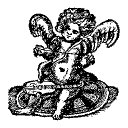
|
The Diapason PressCorpus Microtonale |

|

|
The Diapason PressCorpus Microtonale |

|
The gamut of contemporary music cannot be complete without microtonal music, compositions that make use of pitches selected from tuning systems with more than twelve pitches per octave. Such music has been written in a variety of systems, sometimes derived from just intonations (based on acoustically pure fifths, major thirds, and sometimes harmonic sevenths and other inteverals), sometimes from multiple divisions (which arise if the octave is divided into more than twelve equal parts), sometimes from still other systems. The series Corpus Microtonale intends to make available representative examples in well-organized and well-cared-for editions, which explain the intricacies inherent in this sometimes esoteric music to the interested performer and student.
| CM 1 | Adriaan Daniël Fokker: Selected musical compositions (1948–1972) |
| CM 2 | Anton de Beer: For 31 Elises plus Bouw and Jeanne, for two violins and archiphone in 31-tone tuning (1981) |
| CM 3 | Fabio Colonna: Esempio della circolatione, for 31-tone keyboard (1618) |
| CM 4 | Joel Mandelbaum: Four miniatures, for archiphone (1972–1979) |
| CM 6 | Alan Ridout: Partita, for cello solo (1959) |
| CM 8 | Henk Badings: String quartet no. IV (1966) |
| CM 11 | Henri Carf: Vision de Teyler, for flute solo (1980) |
| CM 19 | Glen A. Prior: The leaf & Voyage thru a hexany, for 31-tone tubulongs (1977) |
| CM 22 | Charles Delusse: Air à la grecque, for flute and bass in the diatonic, chromatic, and enharmonic genres (1760) |
| CM 23 | Paul Rapoport: Songs of fruits and vegetables, for mixed choir a capella (1981–1984), on poems by Erica Jong |
| CM 28 | Ezra Sims: —and, as I was saying, …, for viola solo (1979) |
| CM 33 | Nicola Vicentino: Four enharmonic madrigals, for four voices (Rome, 1555) |